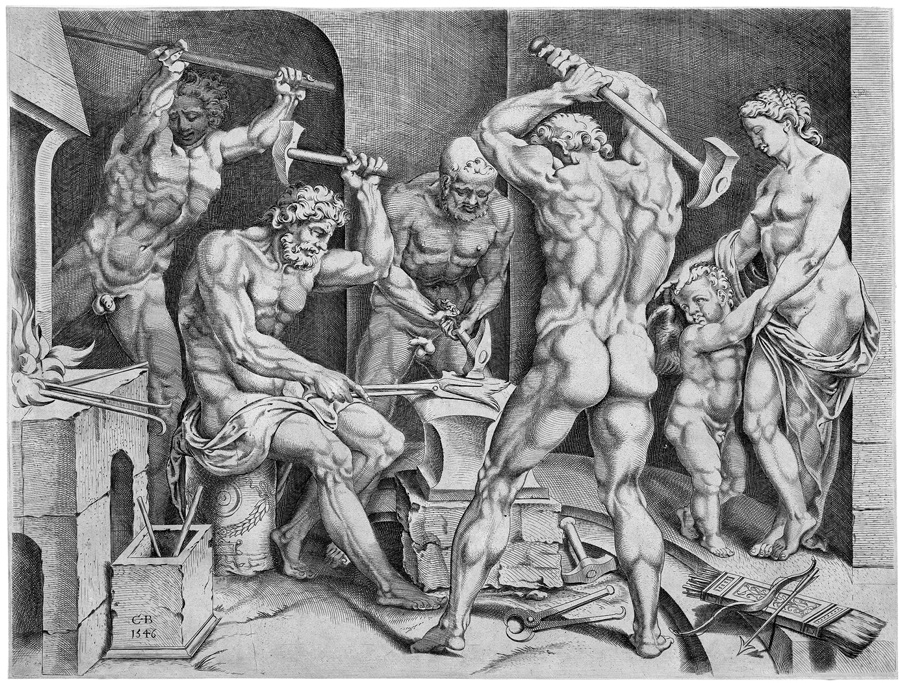Loading the page ...
Cornelis Bos
(1506 or 1510 Herzogenbosch – 1556 Groningen)
Venus at Vulcan’s Forge. Engraving. 28.8 x 38.3 cm. 1546. Hollstein 64.
Although the artist was considered in the 1540s to be one of the leading masters of the ornamental engraving known as the Floris style, important gaps remain in the biography of the Dutch engraver Cornelis Bos that have yet to be filled. In 1540, Bos received the freedom of the City of Antwerp and that same year was admitted to membership of the Guild of St. Luke there. His fortunes took a dramatic turn for the worse in 1544, however, when he was banned from the city for belonging to Antwerp’s Libertine Sect and had his possessions confiscated. Bos is supposed to have trained as an artist in Rome and been associated with some of the artists there, such as Marco da Ravenna and Enea Vico, although today it appears that the Roman sojourn is not vouched for. It is now considered more likely that he trained in the Netherlands and spent time in Paris or Fontainebleau in the 1530s. Circa 1537/38 Bos was active as an engraver and wood-engraver for Jan Cornelisz. Vermeyen and Pieter Coecke van Aelst. After his flight from Antwerp, Bos emigrated to the northern Netherlands, where his first stop was presumably Haarlem. He probably settled in Groningen for good about 1550.
The present engraving, one of the best in his entire oeuvre, is a reproduction in reverse of a painting done by Maarten van Heemskerck in 1536, which is now in Prague. Bos made several engravings after Heemskerck, which may be seen as evidence of the artist’s temporary stay in Haarlem. Heemskerck’s invention, in turn, was inspired by Baldassare Peruzzi’s fresco Vulcan’s Forge in the Villa Farnesina in Rome. Bos’s interpretation of the subject has been executed in a simple, forceful, almost austere engraving technique. Nevertheless, the strong parallel and cross-hatchings lend the scene an irresistibly expressive power and dynamism reminiscent of the prints emanating from the Fontainebleau School. The muscular, sinewy bodies radiate physical power and concentrated effort. Venus looks on with apparent detachment, while little Cupid is frightened by the clamorous din and seeks refuge with her.
A very fine impression printed with considerable tone, with narrow margins. Unobtrusive repairs in the lower margin, margins backed verso, otherwise in excellent condition. From the O. Mascha Collection, Vienna (Lugt 1904).
